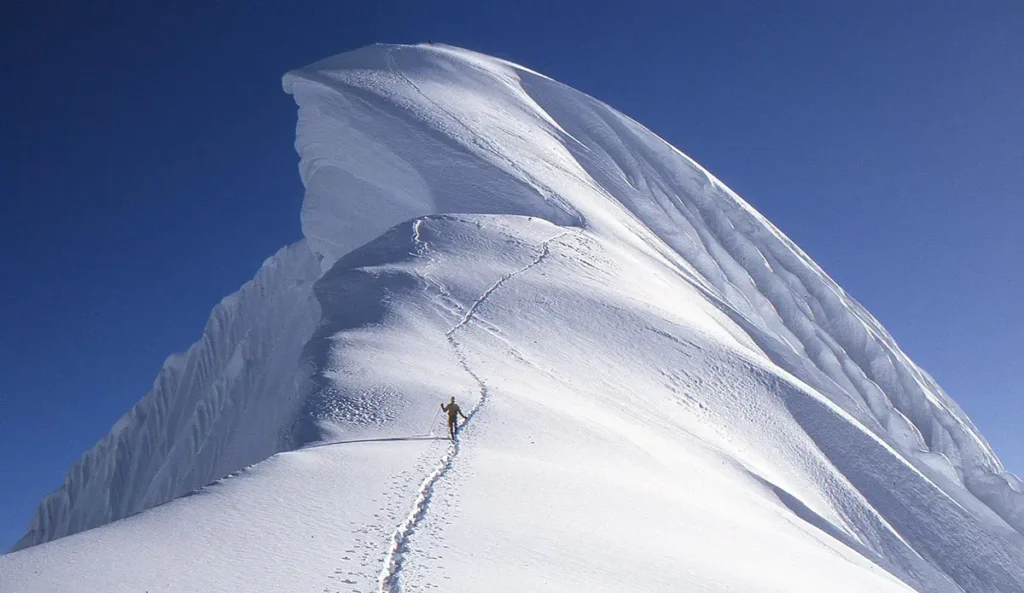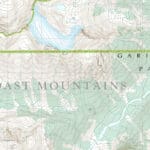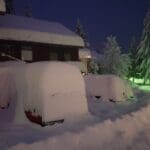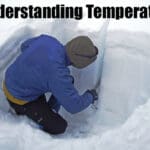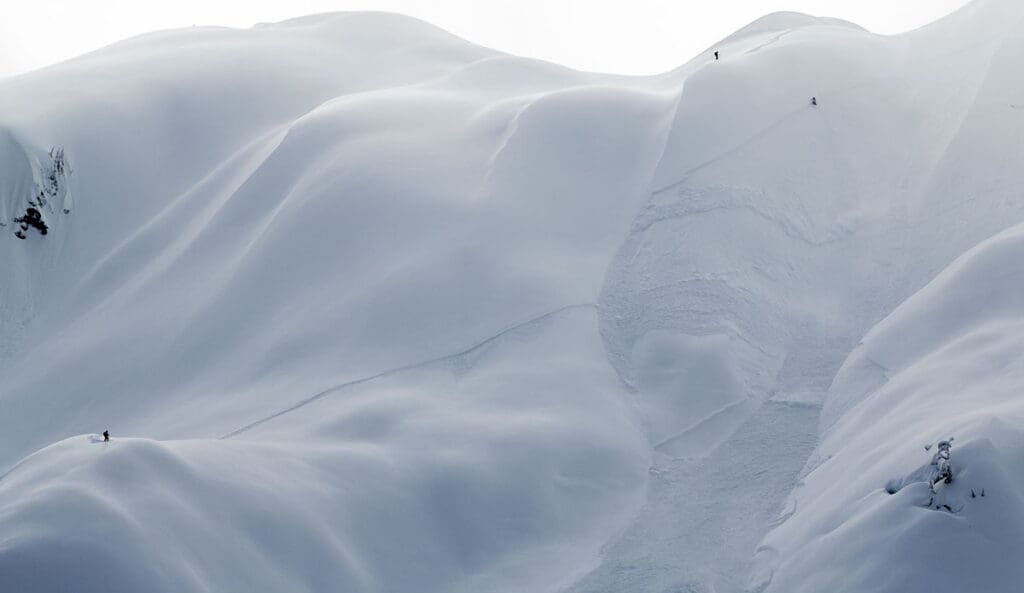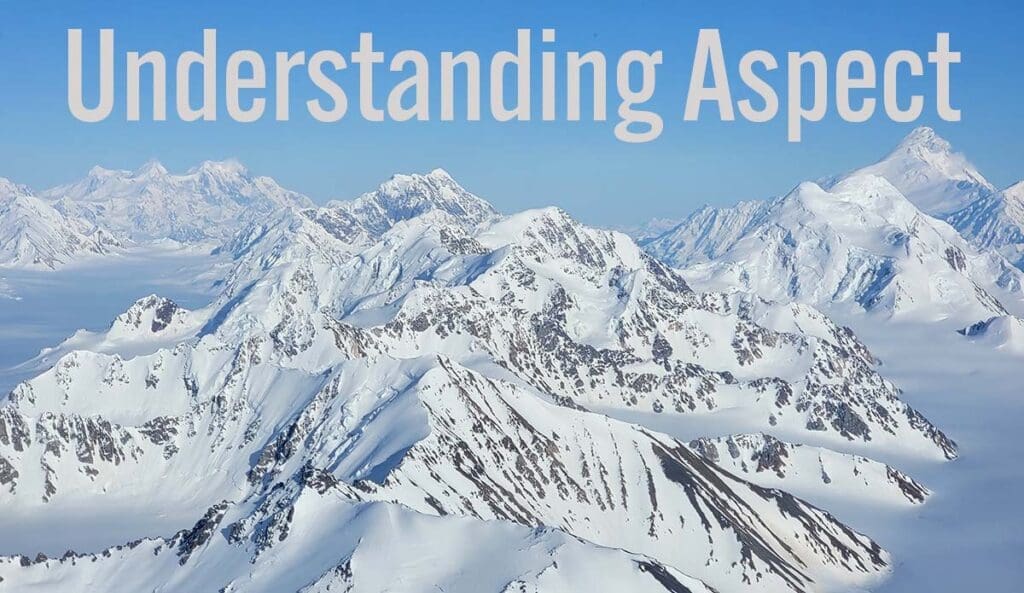What are Cornices?
Cornices are massive, overhanging snow formations that develop along ridgelines and peaks, sculpted by wind into precarious, delicate structures. To an inexperienced backcountry traveler, they might appear like natural snow drifts, but they are one of the most deceptive and dangerous hazards in avalanche terrain. Cornices can collapse without warning, triggering avalanches and sending tons of snow down onto slopes below.
How Cornices Form
Imagine a high mountain ridge where powerful winds sweep snow off the windward side and deposit it on the leeward side. Over time, this snow builds into a fragile overhang, resembling a frozen wave caught mid-break, extending dangerously beyond the true edge of the ridge.
While they may appear solid from above, cornices are often hollow and unsupported underneath. They can form several feet, or even tens of feet, beyond the visible ridge line, leaving anyone traveling on top of them at risk of collapse. The weight of new snow or even a slight pressure—like a skier’s weight—can be enough to send the cornice and anything on it crashing down the slope.
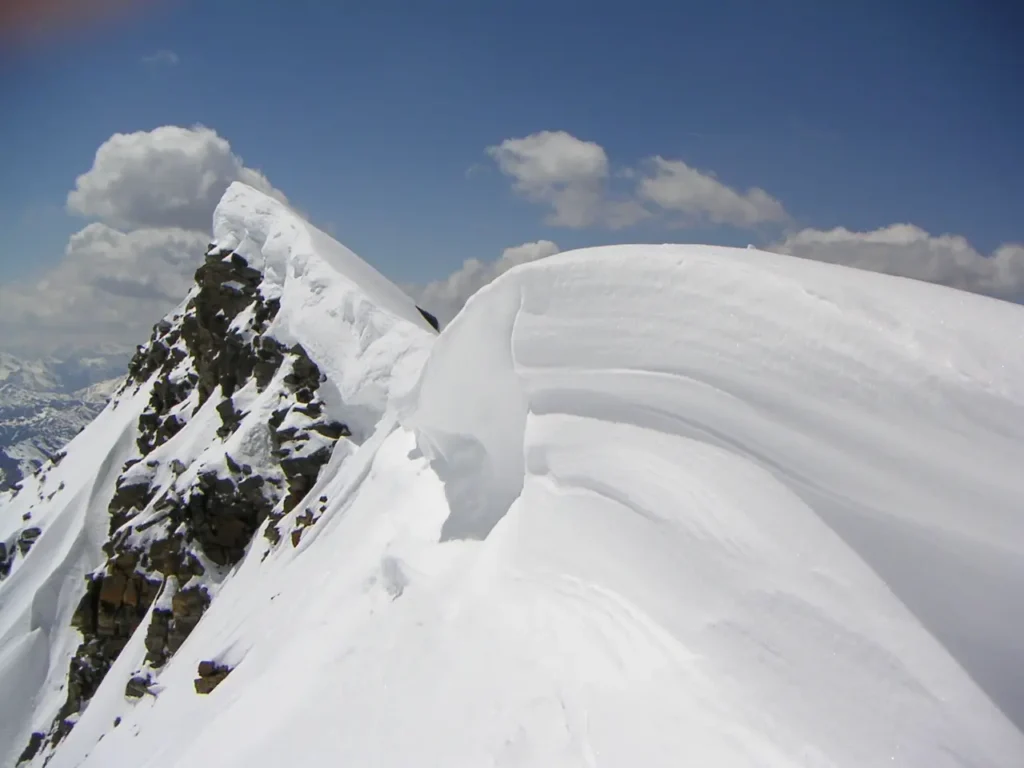
Why Cornices are Dangerous
Cornices are particularly dangerous because they collapse unpredictably, often under their own weight, but also due to wind, warming temperatures, or human triggers. When a cornice breaks off, it can send a large slab of snow onto the slope below, potentially triggering a devastating avalanche.
In addition, travelers on ridgelines often don’t realize how far out cornices extend. It’s easy to venture unknowingly onto a cornice, thinking you’re on solid ground, only for the overhang to give way. Cornices also fracture unpredictably, and a collapse can occur far back from the visible ridge line.
The Haines, Alaska Cornice Collapse
In March 2013, a tragic cornice collapse near Haines, Alaska, claimed the life of one person and injured two others. A group of five skiers and snowboarders, part of a commercial heliskiing tour, was traversing a ridgeline near Garrison Glacier when the snow beneath them suddenly gave way. Four members of the group fell between 600 to 1,000 feet as the cornice broke off. Despite efforts to perform CPR, one snowboarder did not survive, and two others sustained serious injuries.
This incident highlights how deceptively dangerous cornices can be, even on what appears to be a solid ridgeline.
Signs of Cornice Danger
Cornices can be difficult to spot, but here are some clues that indicate the presence of dangerous cornices:
- Windy Ridges: Cornices typically form on the downwind side of ridges, so areas exposed to strong winds are likely to have cornice formations.
- Overhanging Snow: Look for obvious overhangs along ridges. Even if they appear stable, these features are highly prone to collapse.
- Cracking or ‘Whumph’ Sounds: If you hear cracking or feel the snow settle with a “whumph” sound, you’re likely standing too close to a cornice or on unstable snow.
- Sculpted Snow: Wind-sculpted snow formations, including sharp ridges and “pillows,” often indicate that a cornice has formed along the ridge.
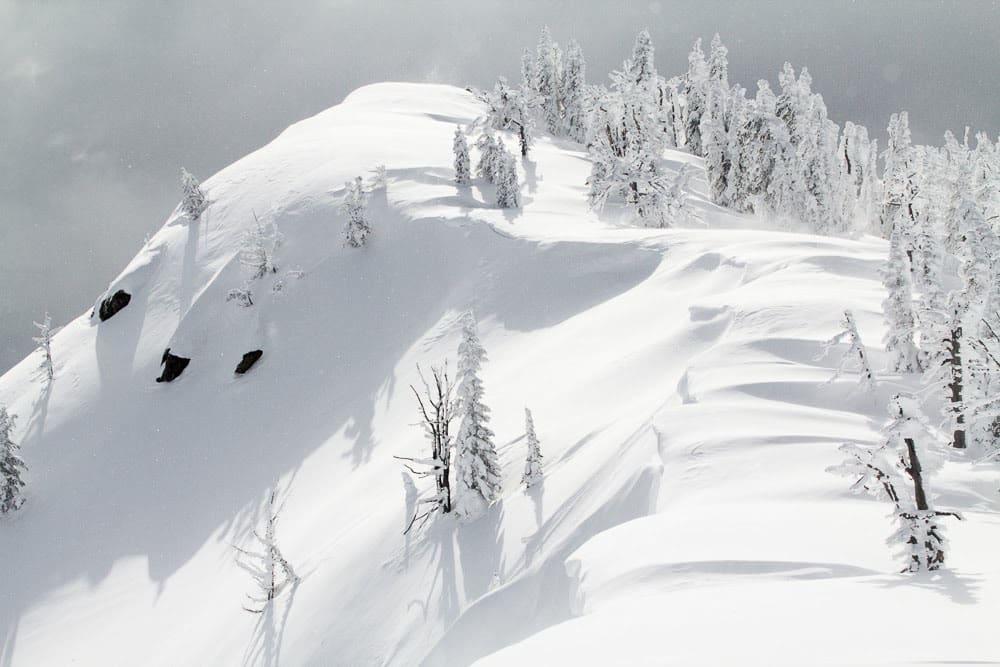
How to Stay Safe Around Cornices
Cornices can’t always be avoided, but you can take steps to minimize your risk:
- Stay Well Back from the Ridge Line: When traveling on ridges, always stay far back from the edge to avoid walking onto a cornice. Cornices can extend much farther out than they appear.
- Avoid Traveling Beneath Cornices: When moving through terrain below ridgelines, avoid slopes directly underneath a cornice. A collapse from above can trigger an avalanche or hit you with tons of snow and debris.
- Assess Wind Conditions: If you’re traveling in areas where wind has been blowing heavily across ridges, assume that cornices have formed on the leeward side. Plan your route accordingly to avoid them.
- Stay Cautious in Warmer Weather: Cornices are more likely to collapse in warmer temperatures or after storms. If the snowpack is warming or the weather is changing, cornices can become even more unstable.
- Use Avalanche Reports: Always check local avalanche bulletins like those provided by the Alaska Avalanche Information Center or other regional forecasting centers. They often include warnings about cornices.
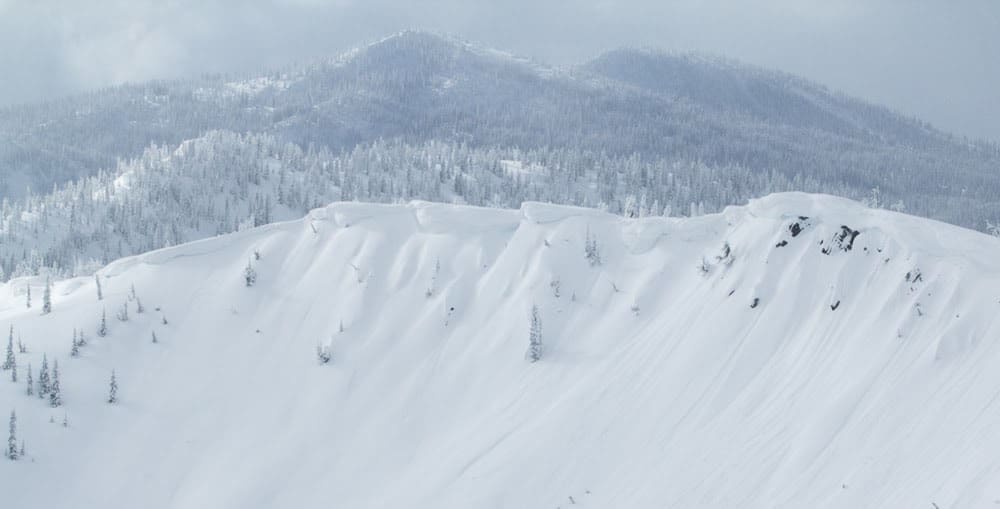
The Hidden Overhangs of Danger
Cornices are one of the most dangerous and deceptive hazards in the backcountry. They form silently, extending far beyond the visible ridgeline, waiting to collapse with the right trigger. By staying aware of their presence, giving ridgelines a wide berth, and avoiding travel beneath cornices, you can minimize your risk of triggering a deadly avalanche or suffering a cornice fall.
Whether you’re skiing, snowboarding, or mountaineering, always remember that what lies beneath the surface—or over the edge—may not be as solid as it seems.
- You Can Get Free Topographic Maps of British Columbia Here
 If you’re exploring the backcountry, knowing how to use a topographic map and compass is essential. GPS devices can fail or lose battery, and you don’t want that happening when it matters the most. Here in British Columbia, there is much more wilderness than occupied land. Getting lost isn’t a difficult thing to do, and… Read more: You Can Get Free Topographic Maps of British Columbia Here
If you’re exploring the backcountry, knowing how to use a topographic map and compass is essential. GPS devices can fail or lose battery, and you don’t want that happening when it matters the most. Here in British Columbia, there is much more wilderness than occupied land. Getting lost isn’t a difficult thing to do, and… Read more: You Can Get Free Topographic Maps of British Columbia Here - Forum 3L All-Mountain Jacket Review: The Brand Is Back
 To discuss snowboarding’s history and not mention the Forum 8 is leaving out a key player in a 40 year old saga. The VHS era of snowboarding videos inspired a generation of riders, with the Forum videos of the late 90’s and early 00’s being at the top of that list. The team was arguably… Read more: Forum 3L All-Mountain Jacket Review: The Brand Is Back
To discuss snowboarding’s history and not mention the Forum 8 is leaving out a key player in a 40 year old saga. The VHS era of snowboarding videos inspired a generation of riders, with the Forum videos of the late 90’s and early 00’s being at the top of that list. The team was arguably… Read more: Forum 3L All-Mountain Jacket Review: The Brand Is Back - Avalanche Awareness 101: Snowfall
 One of the primary and most obvious contributors to an avalanche is fresh snowfall. When learning about backcountry safety and avalanche awareness, it’s crucial to understand how the amount of snow mixed with the other main variables (terrain, aspect, wind, and other layers) come into play. This page discusses why it’s important to factor in… Read more: Avalanche Awareness 101: Snowfall
One of the primary and most obvious contributors to an avalanche is fresh snowfall. When learning about backcountry safety and avalanche awareness, it’s crucial to understand how the amount of snow mixed with the other main variables (terrain, aspect, wind, and other layers) come into play. This page discusses why it’s important to factor in… Read more: Avalanche Awareness 101: Snowfall - Avalanche Awareness 101: Temperature
 Why Temperature Matters Temperature is one of the most easily observable variables in the backcountry, but also one of the most overlooked when it comes to avalanche risk. Unlike complex snowpack tests or hard-to-read terrain features, temperature is something anyone can track with the right mindset and tools. For skiers and snowboarders who want to… Read more: Avalanche Awareness 101: Temperature
Why Temperature Matters Temperature is one of the most easily observable variables in the backcountry, but also one of the most overlooked when it comes to avalanche risk. Unlike complex snowpack tests or hard-to-read terrain features, temperature is something anyone can track with the right mindset and tools. For skiers and snowboarders who want to… Read more: Avalanche Awareness 101: Temperature - Big Changes Are Coming To The Spearhead Traverse
 The Spearhead Traverse is a horseshoe-shaped loop in the alpine environment connecting Whistler and Blackcomb mountains. While you can take the Peak2Peak gondola for a short ride in the sky between the two mountains, “The Spearhead” is an epic, multi-day (for most) journey that is not for the faint of heart. The route itself spans… Read more: Big Changes Are Coming To The Spearhead Traverse
The Spearhead Traverse is a horseshoe-shaped loop in the alpine environment connecting Whistler and Blackcomb mountains. While you can take the Peak2Peak gondola for a short ride in the sky between the two mountains, “The Spearhead” is an epic, multi-day (for most) journey that is not for the faint of heart. The route itself spans… Read more: Big Changes Are Coming To The Spearhead Traverse
